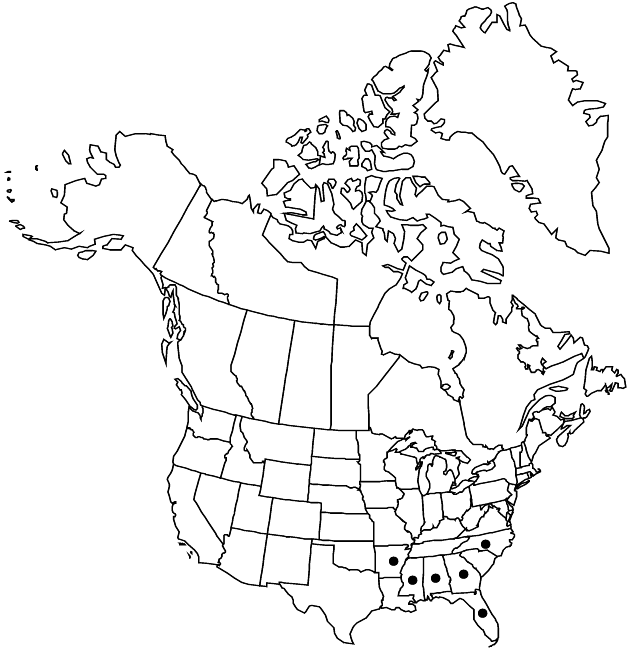Gamochaeta chionesthes
Sida 21: 725, figs. 2-4. 2004.
Annuals (winter-annuals), 1–45 cm; fibrous-rooted. Stems erect to decumbent-ascending, not pannose (indument whitish, like closely appressed, polished cloth, hairs usually not individually evident). Leaves basal and cauline, basal present through flowering, blades oblanceolate to oblanceolate-spatulate, 2–6 (–7) cm × 5–13 mm (gradually smaller, becoming linear bracts distally), faces bicolor, abaxial closely white-pannose, adaxial sparsely arachnose (light green, hairs persistent, closely appressed, nearly microscopic). Heads initially in ± continuous, cylindric arrays 3–5 (–7) cm × 10–12 mm (pressed), later sometimes interrupted and 7–20 cm (producing axillary glomerules from proximal nodes). Involucres cylindro-campanulate, 3.5–4 mm, bases sparsely arachnose. Phyllaries in 4–5 series, outer ovate, lengths 1/3 inner, apices acute to acute-acuminate, inner oblong-lanceolate, laminae (± striate) purplish (at stereome and on distal margins or not at all), apices acute to acute-acuminate (not apiculate, slightly flaring outward in fruit). Florets: bisexual 2–4; all corollas brownish yellow to purple distally (sometimes purple only on adaxial faces of lobes in bisexual corollas). Cypselae (purple) 0.5–0.6 mm.
Phenology: Flowering (Mar–)Apr–May(–Jun).
Habitat: Disturbed, open sites, roadsides, banks, woods edges and clearings, fields, flood plains, pastures, sandy, loamy, and clay soils
Elevation: 0–200 m
Distribution

Ala., Ark., Fla., Ga., La., Miss., N.C.
Discussion
Selected References
None.